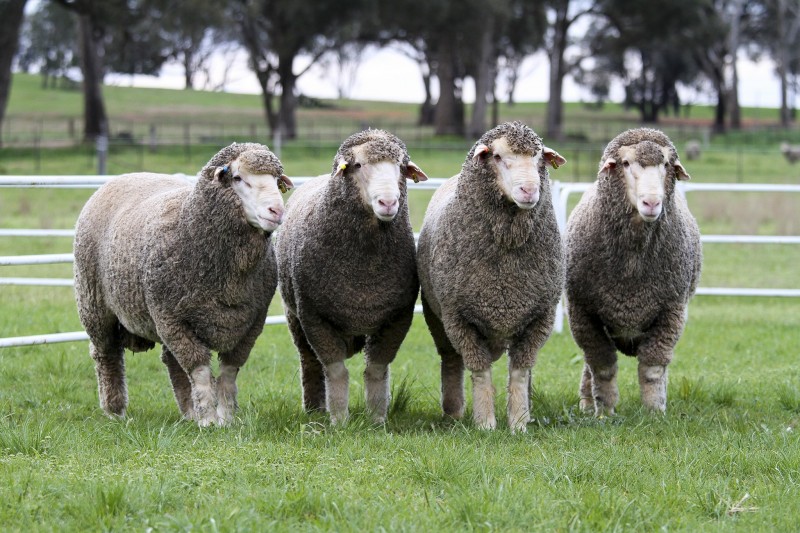IT’S THE ALL-ROUNDER
“Encompassing the four key profit drivers of fertility, fecundity, wool and meat, the Dohne Merino has firmly established itself as the ideal all-rounder and breed for now and into the future.”
MEAT – The Dohne produces an award winning, high yielding (up to 49pc) prime lamb carcase with attributes being equal to the commonly known terminal breeds with one exception, less fat.
Along with these characteristics the Dohne has the distinct advantage of being both a self-replacing flock and a terminal prime lamb system. Dohnes command equal monetary returns over-the-hooks and in the saleyard to terminal breeds and are being increasingly sought after by processors, restockers, finishers and feedlots.
WOOL – Gone are the misconceptions of Dohne wool being inferior to Merino wool with the backing of AWEX. Dohne Merino wool is no longer
classified as anything other than AAAM. The majority is inseparable from quality Merino wool, based on standard testing procedures.
Crimp and definition characteristics of wool produced by Dohne Merinos is on par with Merino wool and there is no price differentiation. For even the most discerning wool enthusiast, separating a quality Dohne fleece to that of a Merino is a near on impossible task; test results speak for themselves.
FERTILITY – It’s the most important aspect of sheep production. Fertility is one of the main drivers for profit in the sheep flock, and certainly a key measure in assessing flock reproduction and genetic improvement in studs. It is not uncommon for the breed to record lambing percentages of up to 150pc,
equal to traditional crossbred and composite flocks.
The Dohne competes equally with the Merino for wool quality.Its superior carcase, faster lamb growth rates and most importantly, higher fertility and fecundity, make the Dohne an attractive and profitable option for producers.
FECUNDITY – Increasing ewe reproductive rate will increase profit to farmers. By introducing Dohnes, farmers have been increasing gross margins not only through ewe fertility but also fecundity. Fecundity is one of the main profit drivers in a sheep flock and certainly a key profit measure in assessing a flock’s production.
Improved reproduction and fecundity influences the rate of genetic change in all other production aspects.To improve reproduction efficiency is to improve
fecundity (rate and number of multiple births). Fecundity has a comparatively high heritability conducive to a reasonably acceptable rate of genetic change.











 Facebook
Facebook YouTube
YouTube Instagram
Instagram